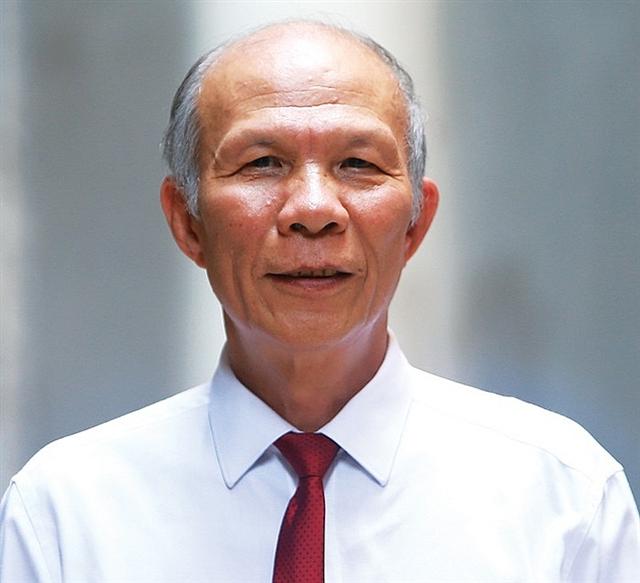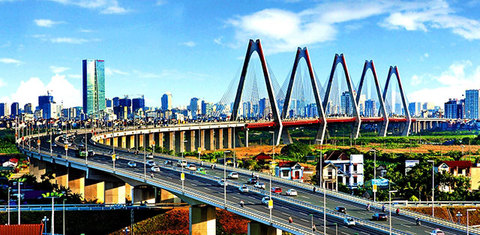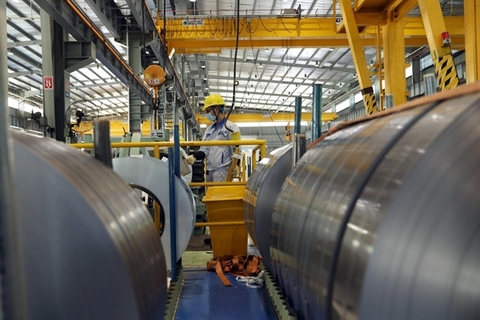Evaluating and estimating state budget to reduce deficit and increase efficiency
Evaluating and estimating state budget to reduce deficit and increase efficiency
According to Minister of Finance Dinh Tien Dung’s latest report delivered recently at the National Assembly (NA), Vietnam achieved most of its financial goals in the last four years, including for 2020. The average state budget deficit target in the period of 2021-2025 stands at about 3.7 per cent of GDP and gradually decreases. Likewise, public debt by 2025 is estimated at 47.5 per cent of adjusted GDP (about 60.4 per cent if not adjusted), challenging the economy and state management agencies amid a global economy full of potential risks.

By Dinh Trong Thinh - Academy of Finance
|
The rate of mobilisation in the state budget reached 24.5 per cent of GDP, higher than the planned level of 23.5 per cent. The state budget revenue and expenditure structure has shifted in a very positive direction, with the proportion of domestic revenue in the total state budget revenue increasing from 68 to 80.9 per cent in the last 10 years, estimated to reach 84.3 per cent in 2020.
Generally, the state budget has a stable and sustainable growth base and is less dependent on external revenues through import-export, crude oil, and international debt. The goal of increasing domestic revenue set by the NA and the government for the 2016-2020 period amounts to 84-85 per cent, which has basically been achieved while the state budget expenditure structure has been restructured and resolutely implemented.
Development investment in the 2016-2020 period has gradually increased to 27-28 per cent of the total state budget expenditures, exceeding the set target of 25-26 per cent. Meanwhile, the proportion of recurrent expenditure has fallen to 60.5 per cent in 2020, lower than the set target of 64 per cent. These figures show the great efforts of the government as it has cut down recurrent expenditures while ensuring capital to adjust base salary and perform important tasks.
The public debt rate in 2020 is estimated to increase by about 10 per cent compared to 2019. Although the ratio in absolute numbers is still increasing, the debt-to-GDP ratio is decreasing. Public debt decreased from 63.7 per cent of GDP in 2016 to 55 per cent in 2019 and 56.8 per cent in 2020. The structure of domestic and foreign public debt has also been adjusted more sustainably.
The interest rate for government bond issuance since 2016 has decreased from about 6.5-8.0 per cent per year for terms from five to 30 years to about 1.5-3.5 per cent per year, with terms from 10 years to 30 years. This is the lowest interest rate ever, and commercial banks are no longer the main investors in the market. Instead, other institutions occupy an important position. Thus, with the tireless efforts of the government and its regulators, the state budget structure in the 2016-2020 period has changed in a very positive direction.
Increased revenue targets
With the targeted economic growth in the next five years of about 6.5-7 per cent on average, the government expects the total state budget revenue for the whole period to be about VND7.8 trillion ($339 million), 1.2 times higher than in the 2016-2020 period. The rate of mobilisation into the state budget averages about 15-16 per cent of GDP. The level of mobilisation from taxes and fees in the next five years is expected to reach 13-14 per cent of the adjusted GDP, corresponding to the mobilisation rate of the ASEAN-5 countries.
This calculation includes to promote the reform of state budget revenue, increase the proportion of domestic revenue to 85-86 per cent of total state budget revenue, and balance revenue from import-export activities and crude oil.
It is expected that in the next five years, state budget expenditures will be 1.3 times higher than in the previous period, of which development investment will account for 27-28 per cent to support the economy after the pandemic. This approach will save recurrent expenditures but ensure policies on security and defence, socioeconomic development, and essential public services.
The average state budget deficit in the 2021-2025 period is expected to be at around 3.7 per cent of GDP, with gradual decreases. Public debt by 2025 is estimated at 47.5 per cent of adjusted GDP (about 60.4 per cent if unadjusted). These figures are very positive and challenging indicators for the economy and state management agencies in the next five years as the global economy remains risky.
Crucial steps
To fulfil the targets of the new stage, enterprises and state management agencies must work closely together. Moreover, it is vital to improve the legal framework and reform the tax system towards embracing revenue sources and expanding the revenue base, especially in line with international practice.
Furthermore, it is necessary to carefully consider tax exemptions, reductions, and extensions in order to minimise the integration of social security policies in taxes and ensure neutrality, fairness, and a convenient business and investment environment, thereby increasing the proportion of domestic revenue and ensuring a sustainable revenue source for the state budget.
Other recommended measures include to resolutely cut down non-urgent state budget expenditures, ensure the efficiency of public investment, and implement the resolutions of the government and the NA. Moreover, the state should streamline payrolls, promote innovation in the public non-business sector, save recurrent expenditures to gather resources for socioeconomic development, and gradually reduce the state budget deficit.
Hopefully, following the positive changes in the 2016-2020 period, the new dynamics of a new period will lead to the government successfully facilitating economic development like in previous terms.



























